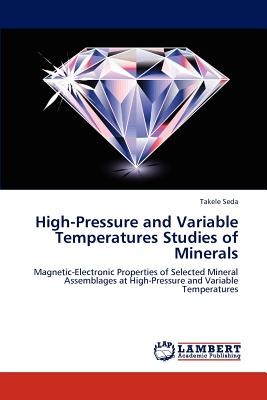
- We will send in 10–14 business days.
- Author: Takele Seda
- Publisher: LAP Lambert Academic Publishing
- ISBN-10: 3659102660
- ISBN-13: 9783659102660
- Format: 15.2 x 22.9 x 1.2 cm, minkšti viršeliai
- Language: English
- SAVE -10% with code: EXTRA
High-Pressure and Variable Temperatures Studies of Minerals (e-book) (used book) | bookbook.eu
Reviews
Description
High pressure and variable temperature studies of synthetic FeS and Fe7S8 as well as natural FeTiO3 have been carried out in a diamond anvil cell. FeS in the low-pressure less than 7 GPa has thermally activated charge carriers and a high-spin electronic configuration, whereas monoclinic-FeS above 7 GPa adopts a magnetically quenched low-spin state and non-metallic behaviour associated with the filled valence band. By contrast Fe7S8 is magnetic and metallic below 5 GPa and diamagnetic metallic above this pressure. The Fe3+/Fe2+ ratio in natural ilmenite samples shows rapid increase under pressure from ambient up to 2 GPa, as deduced from 57Fe Mössbauer pressure studies. Pressure induced intervalence charge transfer away from the ferrous sites, conceivably across regions of octahedra, to the empty 3d manifold of the Ti4+ cation in an adjacent face-sharing layer along the c-axis may account for the change in the Fe3+/Fe2+ ratio. This is the first heteronuclear intervalence charge transfer observed by high-pressure Mössbauer study.
EXTRA 10 % discount with code: EXTRA
The promotion ends in 23d.05:48:03
The discount code is valid when purchasing from 10 €. Discounts do not stack.
- Author: Takele Seda
- Publisher: LAP Lambert Academic Publishing
- ISBN-10: 3659102660
- ISBN-13: 9783659102660
- Format: 15.2 x 22.9 x 1.2 cm, minkšti viršeliai
- Language: English English
High pressure and variable temperature studies of synthetic FeS and Fe7S8 as well as natural FeTiO3 have been carried out in a diamond anvil cell. FeS in the low-pressure less than 7 GPa has thermally activated charge carriers and a high-spin electronic configuration, whereas monoclinic-FeS above 7 GPa adopts a magnetically quenched low-spin state and non-metallic behaviour associated with the filled valence band. By contrast Fe7S8 is magnetic and metallic below 5 GPa and diamagnetic metallic above this pressure. The Fe3+/Fe2+ ratio in natural ilmenite samples shows rapid increase under pressure from ambient up to 2 GPa, as deduced from 57Fe Mössbauer pressure studies. Pressure induced intervalence charge transfer away from the ferrous sites, conceivably across regions of octahedra, to the empty 3d manifold of the Ti4+ cation in an adjacent face-sharing layer along the c-axis may account for the change in the Fe3+/Fe2+ ratio. This is the first heteronuclear intervalence charge transfer observed by high-pressure Mössbauer study.


Reviews